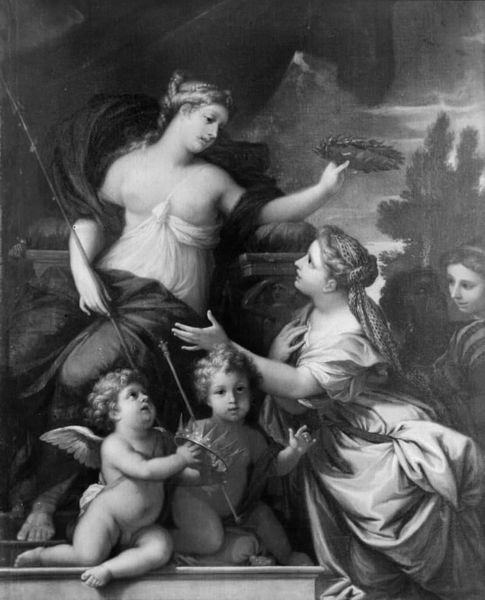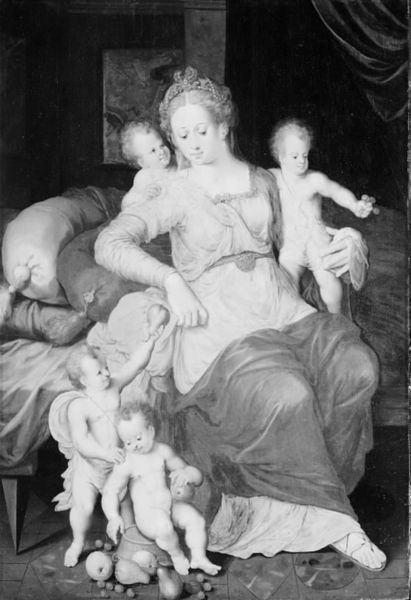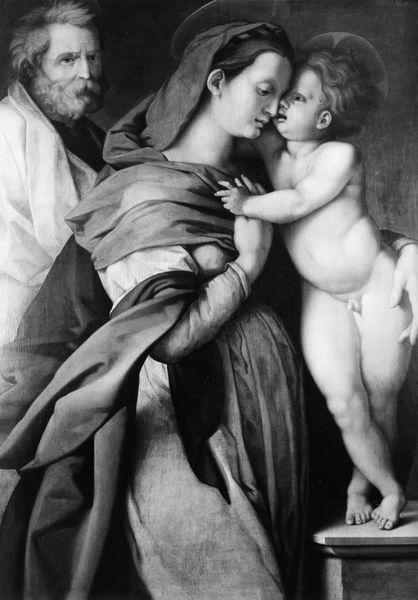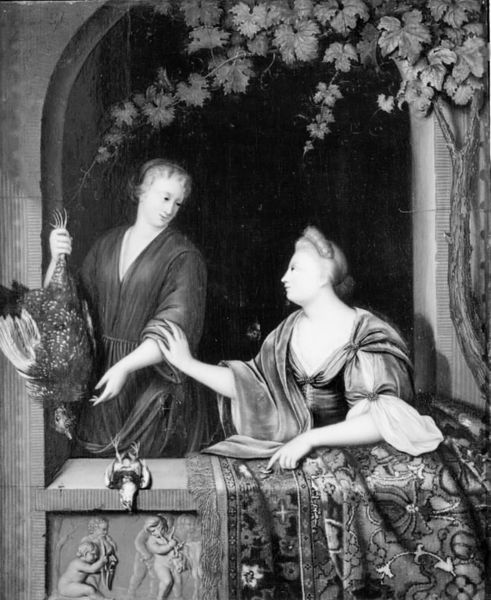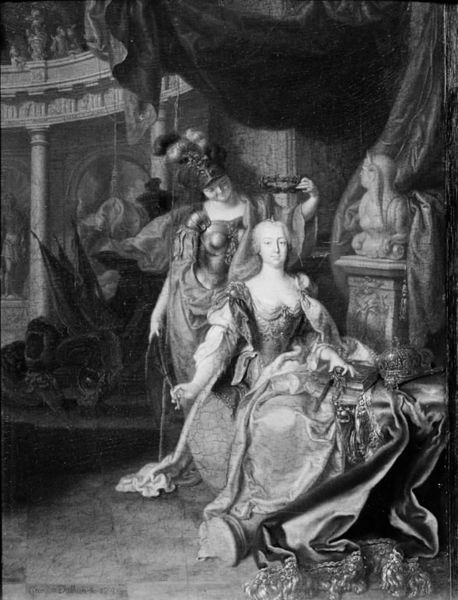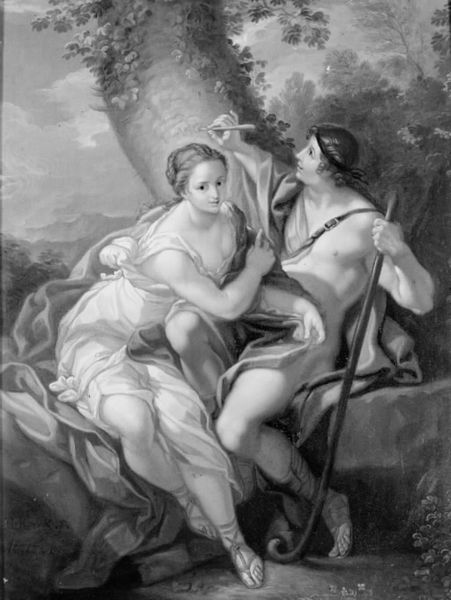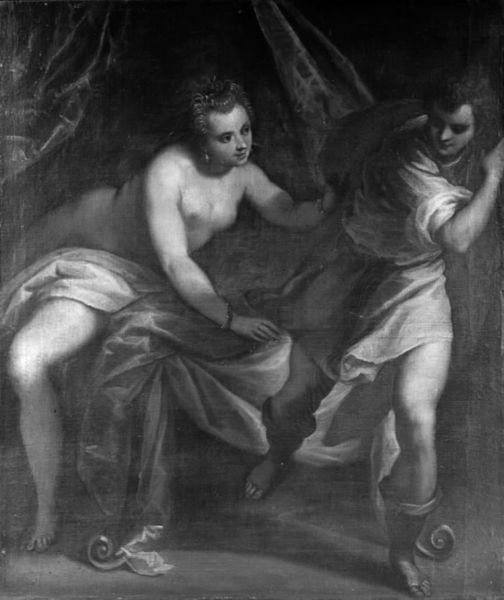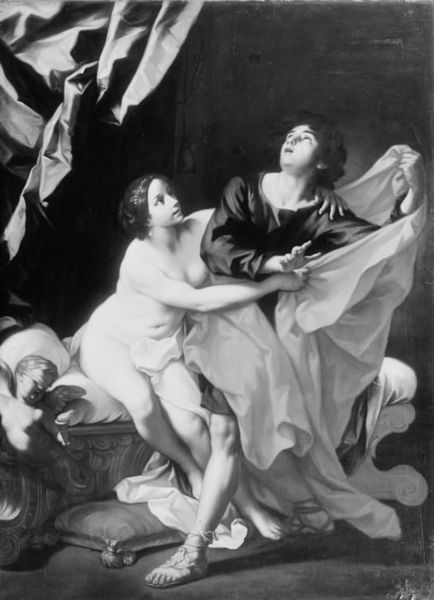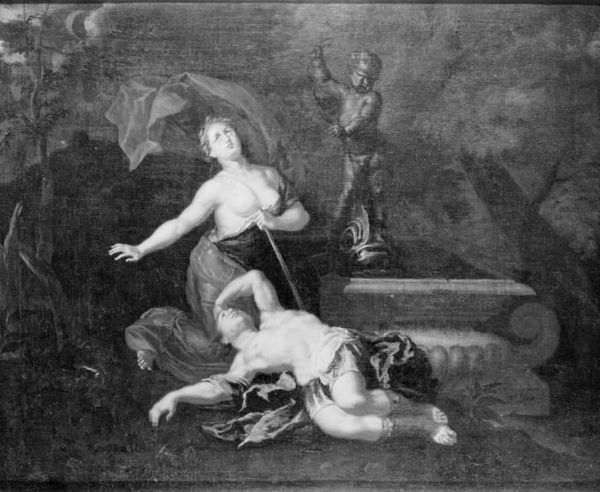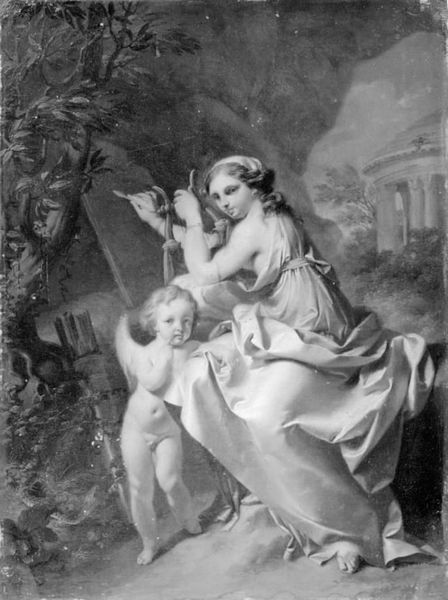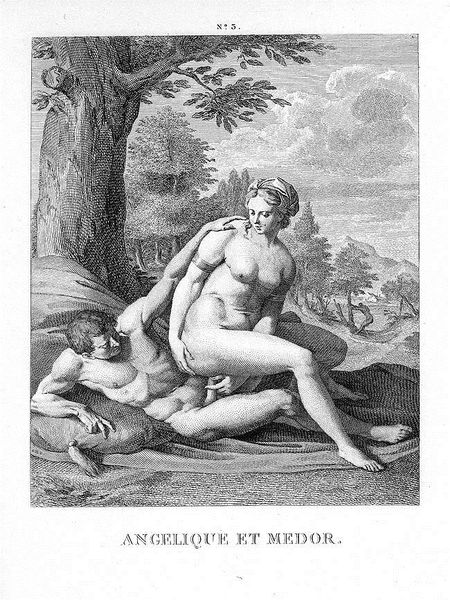
painting, oil-paint
#
allegory
#
baroque
#
portrait
#
painting
#
oil-paint
#
figuration
#
genre-painting
#
nude
#
erotic-art
Dimensions: 39.2 cm (height) x 28.8 cm (width) (Netto)
Curator: This painting, titled "Allegory on Music," was completed in 1696 by Pieter van der Werff. It’s currently housed here at the SMK, the Statens Museum for Kunst. Editor: Immediately, the somberness in its monochromatic tones stands out. And that weeping statue in the background only seems to deepen the pervading sense of quiet melancholy. Curator: Precisely. Allegories often rely on recognizable symbols, and that figure suggests mourning or penitence, setting a moral tone, perhaps about the fleeting nature of earthly pleasures even as it depicts those pleasures. Editor: Yes, and the woman with the lute—the sharp angle of her arm, the slope of her neck-- is interesting. And then that putto clutching her robe is drawing my eye downwards along a diagonal that pulls the composition together. Curator: Van der Werff's baroque training would have exposed him to mythological and allegorical subjects, so portraying music as a kind of alluring, partially unclothed muse makes a great deal of sense when viewed within its artistic context. Editor: The scattered papers and the discarded measuring tool – a set square, perhaps? – seem placed intentionally as if to invite us to engage in an intellectual decoding exercise. I notice also that the lute player has an opened musical score near her, suggesting learning and creation, but it has the distinct aura of still-life, somehow. Curator: Music, as portrayed here, becomes an intellectual exercise, not merely frivolous entertainment but also part of the whole world of mathematics and architecture... All of which come to mind with that set square as the materialization of these notions. And beyond the primary allegory, do you think there's an erotic element at play, too? Editor: Absolutely. While ostensibly a moral allegory, the overt sensuality—the woman's pose and partial nudity—hint at the complicated intersection of virtue and worldly delight which so typified the baroque imagination. There's an appealing visual tension created with the juxtaposition of grief and celebration. Curator: In short, this oil-on-canvas work serves not merely as visual enjoyment, but also demands active interpretation on our part, an investigation into layers of meaning, all while delighting our senses. Editor: Absolutely. By exploring the visual structure and allegorical elements, we gain insights not only into Van der Werff's technique but also the era’s philosophical questions. It feels as if there is always more to decipher.
Comments
No comments
Be the first to comment and join the conversation on the ultimate creative platform.
